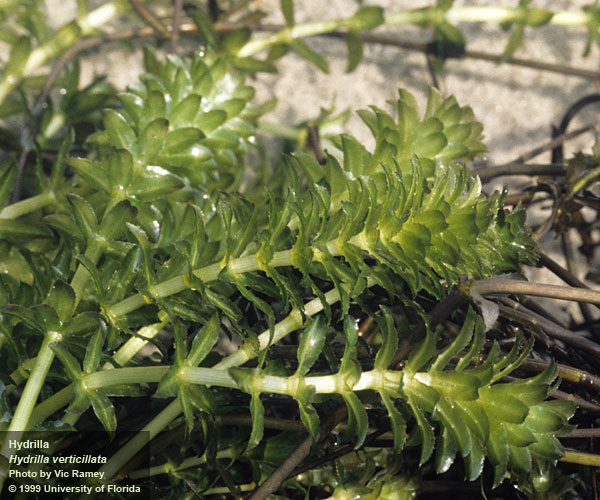
by Rick O'Connor | Sep 1, 2021
EDRR Invasive Species
Hydrilla (Hydrilla verticillata)

Hydrilla Photo Credit: Vic Ramey, UF/IFAS Center for Aquatic and Invasive Plants
Define Invasive Species: must have ALL of the following –
- Is non-native to the area, in our case northwest Florida
- Introduced by humans, whether intentional or accidental
- Causing either an environmental or economic problem, possibly both
Define EDRR Species: Early Detection Rapid Response. These are species that are either –
- Not currently in the area, in our case the Six Rivers CISMA, but a potential threat
- In the area but in small numbers and could be eradicated
Native Range:
India.
Introduction:
Intentionally introduced in 1950-51 as a plant for aquariums.
EDDMapS currently list 3,592 records of this plant in the U.S. and Canada. Most are east of the Mississippi River. There are 370 records in Florida (certainly underreported) and 91% of those are in central and south Florida. There are only 33 records in the Florida panhandle but none of those are within the Six Rivers CISMA (Escambia, Santa Rosa, Okaloosa, Walton, Holmes, and Washington counites. There are four records from the Mobile delta, which lies in Baldwin County Alabama and is part of Six Rivers.
Description:
This is a submerged aquatic plant that will grow up to and across the surface of freshwater habitats. It can grow to lengths of 20 feet. Small whorled, saw-toothed, and pointed green leaves grow from the stem. Small solitary white flowers grow from extended threadlike stalks coming from the stems and resting on the surface. Can form dense mats at the surface.
Issues and Impacts:
The fast growing dense mats of Hydrilla block out sunlight needed by native submerged plants and cause their decline. These thick mats can reduce the natural flow of rivers and springs it invades altering the hydrology and ecology of the system, often reducing the dissolved oxygen levels. It has been known to clog irrigation and flood control canals as well as actually impede boating on some waterways.
The plant is extremely hardy being found in canals and ditches as shallow as a few feet to rivers, lakes and springs up to depths of 20 feet.
It is listed as a Florida Noxious weed and is prohibited from being sold.
Management:
Small infestations can be removed by hand or pulling out using a rake. The plant should be placed in a location where it can completely dry out and die. Those who can manage the levels of their lakes and ponds and draw down the water and kill the plant that way.
For larger infestations of lakes and springs, mechanical “mowers” can be used to cut and remove large areas of the plant. The removed pieces are then deposited into trucks on shore for further desiccation and disposal. Large mats not removed can increase hypoxia in the waterway. One issue with this method is fragments that are missed can generate into new plants.
There are six insects and one fish (Chinese Grass Carp) that have been used to biologically control the plant. However, establishment of these insects have been problematic. The Chinese Grass Carp do well on hydrilla but will feed on other aquatic plants and breeding populations could be a problem for the native ecology. Thus, only sterile triploid carp are allowed to be used and only with an FWC permit. Read more about these biological control agents at the reference below2.
There are several chemical herbicides that have had some success. For more information on using those, contact your local county extension office.
If you are in the Florida panhandle area and believe you may have hydrilla, please contact your county extension office to let them know and report the siting to www.EDDMapS.org. If you have questions on how to do this, your county extension office can help.
For more information on this EDRR species, contact your local extension office.
References
1 University of Florida IFAS Center for Aquatic and Invasive Plants. Hyrdilla. https://plants.ifas.ufl.edu/plant-directory/hydrilla-verticillata/.
2 Biological Controls. Plant Management in Florida Waters: An Integrated Approach. 2021. Center for Aquatic and Invasive Plants. University of Florida IFAS. https://plants-archive.ifas.ufl.edu/manage/control-methods/biological-control/.
Early Detection and Distribution Mapping System (EDDMapS)
https://www.eddmaps.org/
Six Rivers CISMA
https://www.floridainvasives.org/sixrivers/
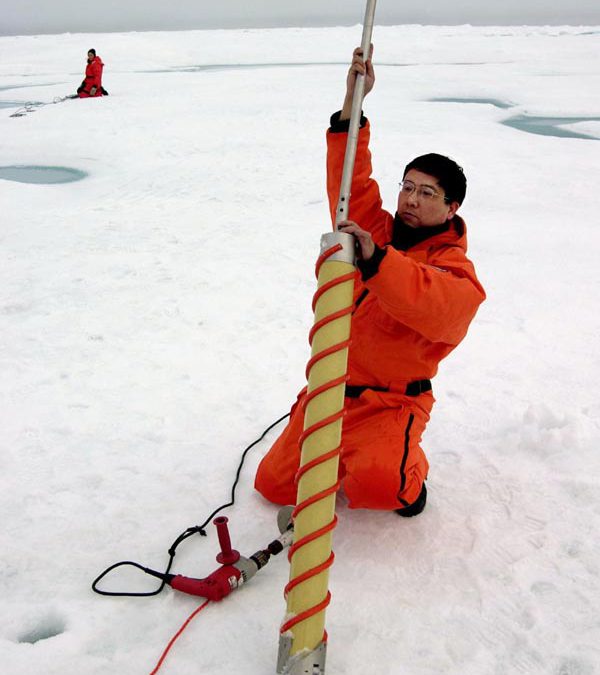
by Rick O'Connor | Aug 30, 2021
Mark Twain once said – “Everyone talks about the weather, but no one does anything about it”. I guess you could say the same for climate.
The topic has been around for a while. As an undergrad science major in the late 1970s, we discussed what was then called “global warming”. It was explained to us that there were gases in our atmosphere that can cause what was called “the greenhouse effect”. Like the windows of a greenhouse, these gases allowed solar radiation to pass through to the surface of the planet but would not allow heated air to leave. Within the greenhouse it would get warmer.
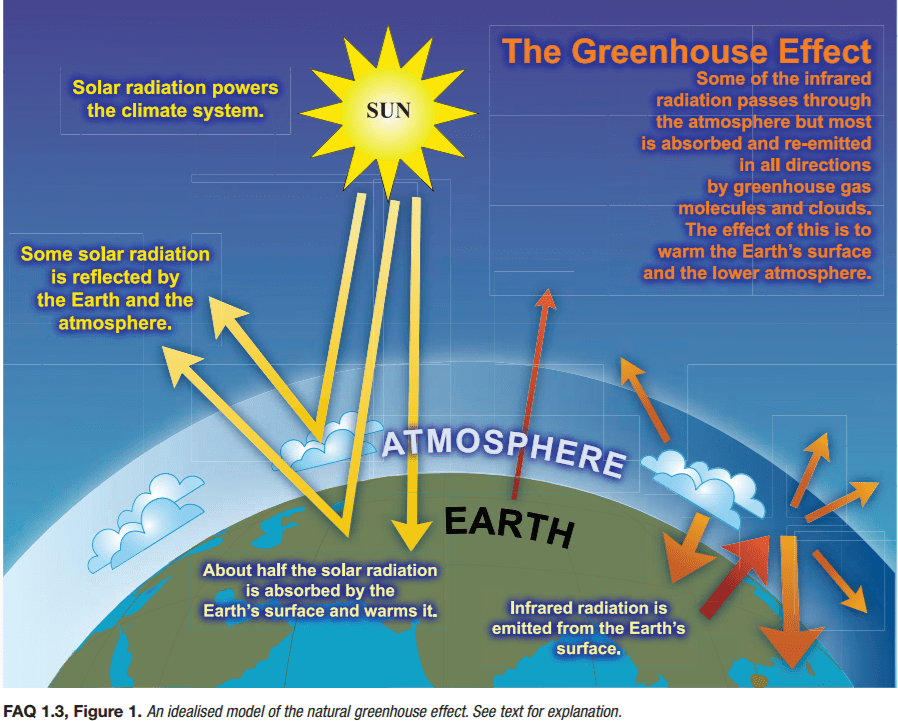
The greenhouse effect.
Image: NOAA
It was also explained to us that this was a natural part of the planet’s cycle. That without the “greenhouse effect” life on our planet could not exist. But it was also explained that the cycle worked like the thermostat in your home. Conditions on the planet increased the amount of greenhouse gas, which would in turn, increase the temperature of the planet. These warming conditions would enhance specific forms of life and their populations increased as well, land and sea. But like a thermostat at home, when the temperature reaches a certain point, the HAVC system shuts off and a cooling period happens within the house. The same happens on earth. Trees, and other forms of life, would increase in number during the warming periods but consume CO2 for photosynthesis and reduce the greenhouse effect leading to a cooling period. Other methods of greenhouse gas sequestration would occur as well. We know that the cooling periods could be quite significant – leading to ice ages. The species that sequestered the greenhouse gases would decline with the cooling periods allowing for an increase in those gases, and the cycle would begin again. And so it goes.
But was there any scientific evidence that such cycles actually exist?
Yes…
It is simple to construct an experiment within a closed system in a lab where you increase selected greenhouse gases to determine whether they actually increase temperatures within the systems. This has been numerous times by numerous scientific teams and the answer is yes… this happens. Science has been following this since 18961.

Svante Arrhenius, the Swedish chemist who first proposed how the greenhouse effect works in 1896.
Image: Science History Institute.
But is there evidence this occurs in the natural world, where there are more complex factors involved?
Yes…
Probably one of the more notable ones were gases trapped in ice cores removed from Arctic and Antarctic ice. Geology has understood for decades that material on our planet, rock and ice, are laid down over time. You can travel anywhere out west and see these layers of different rock layered over time. The idea is that the older material is laid down first and the newer material is near the top. But we also have evidence that the world is not a stagnant place. The earth’s surface shifts and changes constantly under the stresses of plate tectonics (another topic for another day). This shifting can cause older material on the bottom to shift in an upward position, placing it at – or above – newer material. So, geologists understand that it is not as simple as “older is on bottom” and great scrutiny and study must go into “reading” the rock layers. But reading those rock layers correctly can tell you a lot about how the earth has changed over time.
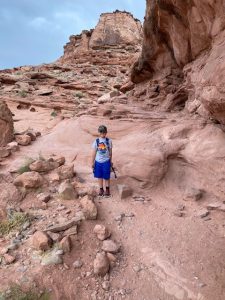
You can see the different layers of rocks as they have laid out over the history of the earth.
Photo: Rick O’Connor
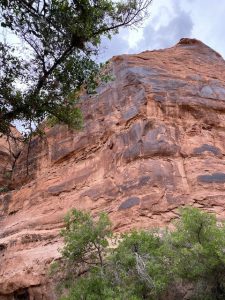
Notice the different layers within the rock face in Utah.
Photo: Rick O’Connor
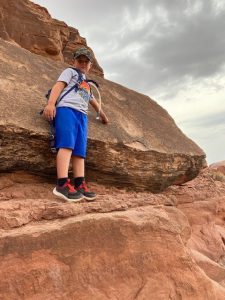
This slab of rock shows the impression of a dinosaur foot. Notice how the slab has slid down the rock face into its current position.
Photo: Rick O’Connor
We know that when ice forms gas bubbles are trapped inside. You can take any ice cube today and see this. Using the same concept as “rock reading”, you can read layers of ice that are cored from the great ice sheets at the poles. Analyzing these gases, you can get an idea of the concentration of the greenhouse gases present at the time the ice formed. You can compare this to the fossilized plants and animals (even fossilized pollen) of those same periods and put together a map of the concentration of greenhouse gases, what the expected temperatures would have been based on those concentrations and compare this to the plants and animals that existed during that same time (were they warm or cold seasoned creatures). With this you could develop a map of the changing climate over time.
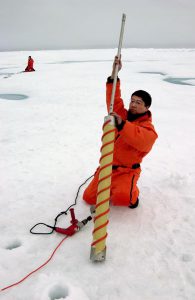
An ice core is being removed by a NOAA scientist.
Photo: NOAA
There is data going back over the last 900,000 years and yes… there are cool and warm periods found. One graph published by Miller and Spoolman (2011)1 shows average surface temperatures ranging from 9°C to 16°C (48°F to 61°F) over the last 900,000 years. The graph shows a basic “sine wave” of steady cooling and warming – a steady pattern – a cycle. Miller and Spoolman referred to these cycles as glacial and interglacial periods (freezing and thawing).
So, the lab and field evidence suggest we do live on a planet with ever changing climate. We are currently in a “thawing” period, and all is right with the world. But the data shows something else. Something that has climate scientists a bit concerned. Over the last 1000 years there has been a steady increase in surface temperatures, which was expected, but over the last 100 years there has been an unusual spike in increasing temperatures, something that have not seen in all of the data studied before. A rapid increase in surface temperature. What could be causing this unusual steep increase, and can the natural sequestering processes mitigate this rapid change?
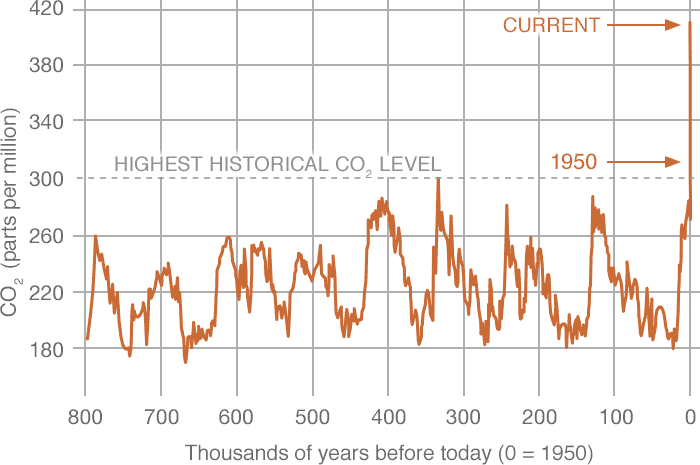
This graph shows the changes in mean CO2 levels over the last 800,000 years. Notice the sharp increase in recent years.
Image: NOAA
If you examine a graph of temperature change over the last 1000 years you will notice the unusual spike beginning about the year 1900, 120 years ago. What could have happened to generate this spike?
Did the concentrations of greenhouse gases increase at the same rate during this time period?
Yes… they did.
What could have happened to cause this unusual increase in greenhouse gases and surface temperatures? And why has the natural sequestering process to cool the planets “thermostat” not kept up?
Back to the lab and to the field.
One event stands out… the industrialization of the planet. The industrial revolution began almost 300 years ago. We moved from burning wood as a source of energy to coal, and eventually oil. The burning of these fossil fuels significantly increases the same types of gases as the planet’s greenhouse gases (carbon dioxide CO2, methane CH4 and others). By the turn of the century (1900) the fossil fuel boom was in full swing. Industry and transportation were burning more and more of these fuels emitting more and more of the greenhouse gases that we know warm the planet up.
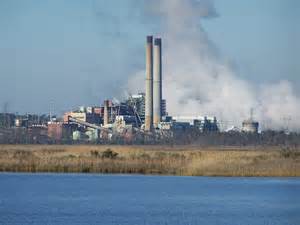
Power plant on one of the panhandle estuaries.
Photo: Flickr
But what about the sequestering processes of the forest and the oceans?
We began removing the forest. As the human population grows there is a need for more land for agriculture and homes/cities to live in. All across the planet deforestation was also in full swing, and agriculture/cities used fossil fuels as well. The change was on. Science has been able to determine that the carbon dioxide concentration has risen from 280 ppm at the beginning of the industrial revolution to 384 ppm in 20071. A study conducted by Field and Marland (2007) suggested that if the rate of CO2 increase at that time (3.3% annually) continued, it would reach 560 ppm by 2050 and 1390 ppm by 2100. This would have a significant impact on the climate which would in turn have a significant impact on the ecology and economics of our planet.
There was deep concern over this in the scientific community. They began developing computer models that could predict the changes in temperature with increased rates of greenhouse gases and how those could impact glacial melt, sea level rise, and atmospheric conditions that stimulate our weather. It is understood that models are only as good as the data you provide. We have learned this with hurricane models. There are numerous computer models that predict the landfall of hurricanes. The climatologist inputs what data they can get, and the model predicts where the storm will probably go – and at what intensity it will probably hit land with. These are the classic “spaghetti” models we are all familiar with on the evening weather. With hurricanes it is pretty easy to test your model. You input the data – predict landfall and intensity – and see what happens. You will get results very soon. You will notice on the evening weather that not all models make landfall at the same location. Some models are better than others. For those that were wrong, you go back and determine what information was not inputted, or inputted incorrectly, and “fix the model”. Because of this we feel very good about our hurricane models.
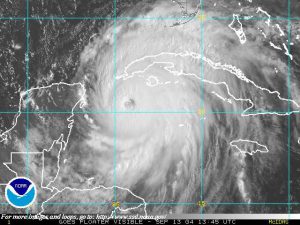
Hurricane forecasting has improved tremendously over the last decades.
Image: NOAA
But with climate, the results of the “landfall” will not happen in hours or days – it will be years or decades. So, as the models were developed in the early 1980s, no one knew for certain whether they were accurate or not.
But that did not stop climate scientists from developing them. There was much concern in what they thought might happen. Some studies suggested that the “tipping point” (the point of no return) for CO2 admissions was 450 ppm1. Their concern was CO2 at, or above, this value could have consequences that could be irreversible for long periods of time – for some, they may never recover. This means even if we brought CO2 emissions down to almost zero, we would still feel the effects for years – a lag effect, and some impacts may not be corrected. And CO2 is only one of the greenhouse gases – there were several others that needed to be watched and analyzed as well. This concerned many scientists as well. Was anyone paying attention?
Enter the IPCC…
In 1988 the United Nations and the World Meteorological Organization established the International Panel on Climate Change (IPCC). This panel consists of over 2500 climatologists from over 130 countries. Their 2007 report was based on more than 29,000 sets of data collected over that last decade. It was stated in this report that there was high probability (90-99%) that the lower atmosphere of the planet is warming and that human activities were responsible for most of this. They cited multiple layers of evidence to support this statement.
This report stated that a rise of 2°C (3.6°F) over 2005 temperatures is unavoidable, and an increase of 3°C (5.4°F) is likely during the next century. Their models suggested the possible outcomes of such climate change.
At a 2°C increase1
- Forest fires worsen
- Prolonged droughts become more intense
- Major heat waves become more common
- Conflicts over water supplies will increase
- Modest crop production increases in temperate regions
- Crop yields fall in tropical Africa
- Coral reefs will be impacted by bleaching
- Glaciers melt faster and impact water supplies for some
- Sea levels will rise and initiate coastal flooding issues
- Malaria will increase
- Arctic species will experience an increase in extinction
At a 3°C increase1
- Forest fires get worse
- Prolonged droughts get worse
- Deserts spread more
- Major heat waves will increase, and associated deaths with them
- Irrigation and hydroelectric power declines
- Water shortages for billions of people
- Water wars and terrorism increase
- Malaria and tropical disease will spread
- Crop pests will multiple
- Coral reefs severely threatened
- Arctic tundra will melt
- 20-30% of the species will face extinction
We discussed how many climate models need time to be tested. It was 30 years between the time I first heard about “global warming” and the publication of the 2007 IPPC report, and another 10 years since that report came out. Do any of the predictions in the list above look familiar? Could these models be on the right course, as we learned with hurricane models – could these be correct?
If so, “no one is doing anything about the weather” – but are we doing anything about the climate?
In the next edition – The Changing Climate: Part 2 – we will look what has happened since 2007. How have things changed in the last decade? Are things getting better?
Reference
1 Miller, G.T., S.E. Spoolman. 2011. Living in the Environment: Concepts, Connections, and Solutions. Brooks and Cole Publishing, Belmont CA. pp. 659.
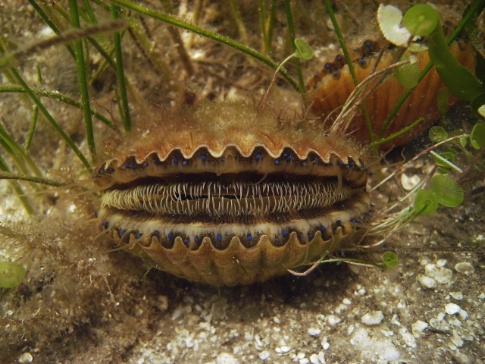
by Rick O'Connor | Aug 27, 2021
For those who lived in the Pensacola Bay area 50 or so years ago, this question comes up from time to time. By scallop I am speaking of the bay scallop (Argopecten irradians), the one sought by so many scallopers then and now. This relatively small bivalve sits on beds of turtle grass, gazing with their ice blue eyes, filtering the water for plankton and avoiding numerous predators. They only live for a year, maybe two. They aggregate in relatively large groups and mass spawn. Releasing male gametes first, then female, fertilizing externally in the water column, to create the next generation.

Bay Scallop Argopecten iradians
http://myfwc.com/fishing/saltwater/recreational/bay-scallops/
These are unique bivalves in that they can swim… sort of. When conditions are not good, or a predator is detected, they can use their single adductor muscle to open and close the shells creating a current of expelling water that “pushes” them along and off the bottom. They were once found from Pensacola to Miami… but no longer. Scallops have become almost nondetectable in much of their historic range. Today they congregate in the Big Bend area of the state, and there they are heavily harvested.
What happened?
Well, if you look at the variety of causes for species decline around the globe habitat loss is usually at the top of the list. The habitat of the bay scallop are seagrass beds. There are many publications reporting the loss of seagrasses across the Gulf and Atlantic coast. Locally we know that the historic beds of the Pensacola Bay system have declined. We also know that some of those beds have shown some recovery in the last 20 years. But was the loss enough to cause the decline of the scallop?
Studies show that there is a strong association between seagrasses and scallops. The planktonic larva typically attached to grass blades a week or two after fertilization. This seems essential to reduce predation. Once they drop from the blades, vegetative cover is important for their survival. This suggests yes – any loss of seagrass could begin the loss of bay scallops.
What about water quality?
We do know that scallops need more saline brackish water – at (or above) 20 parts per thousand (20‰); 10‰ or less is lethal. Sea Grant is currently working with citizen scientists in Escambia County to monitor the salinity of area waters weekly. Though we do not believe the data is usable until we have 100 readings from each location, early numbers suggest that locations in Big Lagoon and Santa Rosa Sound are at 20‰ threshold. We do not know whether run-off engineering of the 1970s may have lowered the salinity to cause a die-off, and one would think (since they can swim) they would move to a better location. However, if salinities were low across much of their local range, and seagrasses were not available in areas where salinities were good, this could have a devasting impact on their numbers.
Then there is sedimentation. Studies show that young scallops (<20mm) that do not have seagrass to attach to settle on silty bottoms and their survival is very low. And then there are toxic metals, and other contaminants that scallops may have little tolerance for. It is known that juvenile scallops have a low tolerance for mercury.
Disease?
One study from the Tampa Bay area indicated that there was little loss of scallops due to disease and parasites.
And then there is overharvesting…
Scallops are mass spawners and there needs to be high numbers of adults near each other for reproduction to be successful. If people are taking too many, this can lead to more spaced adults and less chance of successful fertilization. This combined with environmental stressors probably did our populations in.
According to a publication from Sarasota Bay Estuary Program in 2010, populations of less than five scallops / 600m2 is considered collapsed. Sea Grant has been conducting volunteer scallop searches in the Pensacola Bay area for the last five years. In that time, we have found only one live scallop… we have collapsed. During the 2021 Scallop Search, 17 volunteers surveyed 4000m2 and found no live scallops. However, reports of live scallops outside of our surveys indicate they are still there. We will see what the future holds.
References
Castagna, Michael, Culture of the Bay Scallop, Argopecten irradians, in Virginia (1975). Marine Fisheries
Review, 37(1), 19-24.
https://scholarworks.wm.edu/vimsarticles/1200
Leverone, J.R. 1993. Environmental Requirements Assessment of the Bay Scallop
Argopecten Irradians Concentricus. Final Report. Tampa Bay Estuary Program. Pp.82.
Leverone, J.R., S.P. Geiger, S.P. Stephenson, and W.S. Arnold. 2010. Increase in Bay Scallop (Argopecten irradians) Populations Following Releases of Competent Larvae in Two West Florida Estuaries. Journal of Shellfish Research. Vol. 9, No. 2, pp. 395-406.
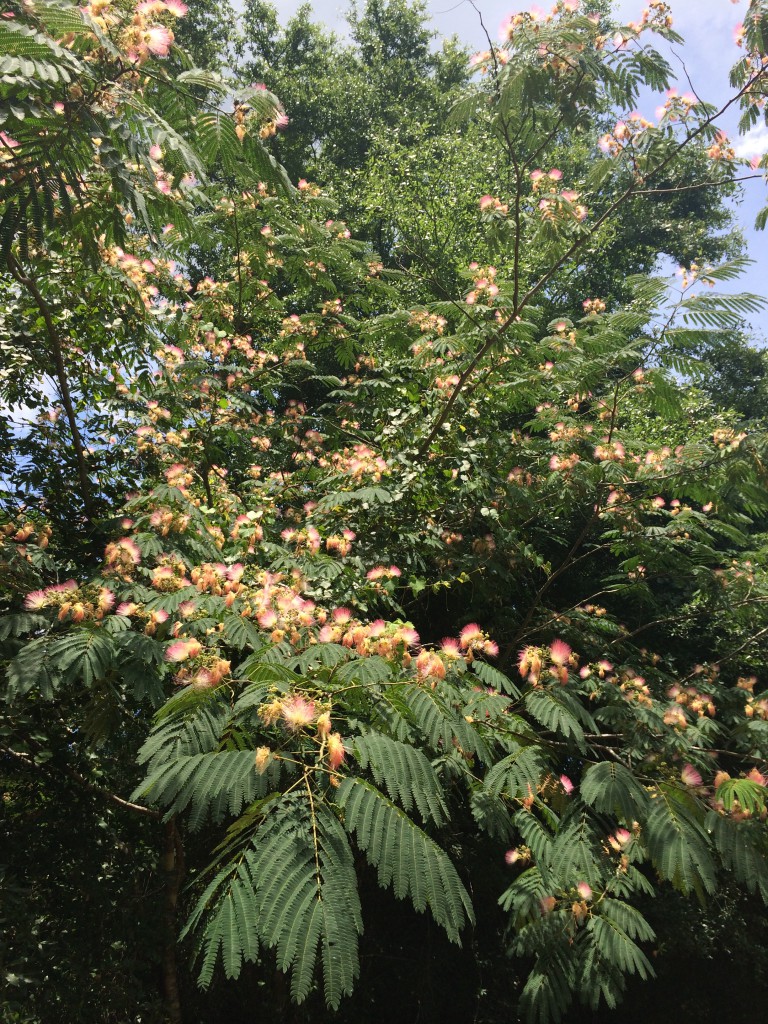
by Rick O'Connor | Aug 27, 2021
Six Rivers “Dirty Dozen” Invasive Species
Mimosa (Albizia julibrissin)
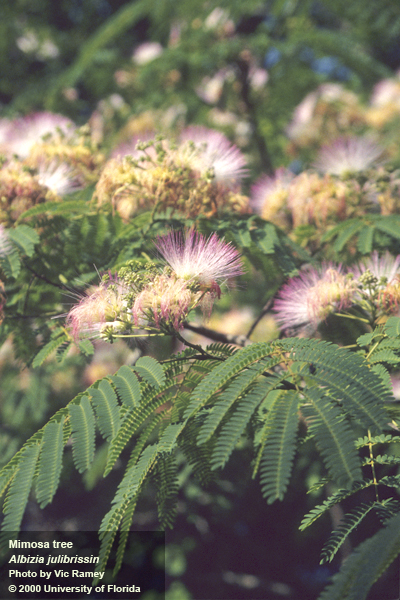
Define Invasive Species: must have all of the following –
- Is non-native to the area, in our case northwest Florida
- Introduced by humans, whether intentional or accidental
- Causing either an environmental or economic problem, possibly both
Define “Dirty Dozen” Species:
These are species that are well established within the CISMA and are considered, by members of the CISMA, to be one of the top 12 worst problems in our area.
Native Range:
Tropical Asia
Introduction:
Intentionally introduced into the United States in 1745 as an ornamental plant. It was popular due to its showy flowers.
EDDMapS currently list 18,546 records of this plant spread across the United States. The vast majority are from the southeastern U.S. 3,323 records are from Florida and 944 within the Six Rivers CISMA. It is most likely under reported.
Description:
This is a small trunked tree with an expanded canopy that reaches about 40 feet in height. It is easily identified by the compounds leaves that can have 20-60 leaflets per branch. The flowers are a brilliant pink and resemble poms-poms. The tree flowers in spring and early summer. Seed pods are present in winter. They are about six inches in length and are light brown in color.
Issues and Impacts:
The primary impact is direct competition with native species. Mimosa does very well in open areas and along the edges of disturbed forested areas. It produces numerous seeds and can take advantage of available native habitats.
Management:
Mechanical removal of saplings is recommended before the plant goes to seed. It is important to remove all roots when pulling by hand to reduce the chance of resprouting.
Chemical treatments (herbicides) will be needed if cutting trees. A 2% solution of glyphosate, or triclopyr, can be used but retreatments may be needed. Application will require a surfactant and contact with the leaves will be enough. 15% Garlon 4, or 100% Pathfinder II, on the bark covering an area of 2 feet can be effective. Trees with trunks larger than 3 inches in diameter may require re-treatment.
There are no known biological controls at this time.
For more information on this Dirty Dozen species, contact your local extension office.
References
Early Detection and Distribution Mapping System (EDDMapS)
https://www.eddmaps.org/
Six Rivers CISMA
https://www.floridainvasives.org/sixrivers/
University of Florida IFAS Assessment
https://assessment.ifas.ufl.edu/assessments/albizia-julibrissin/.
University of Florida Center for Aquatic and Invasive Plants
https://plants.ifas.ufl.edu/plant-directory/albizia-julibrissin/.
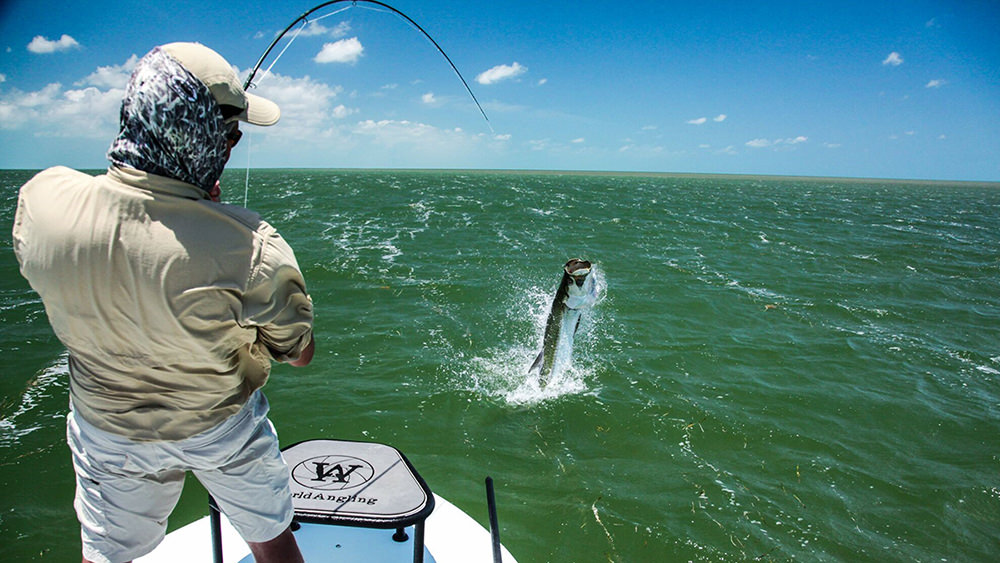
by Rick O'Connor | Aug 18, 2021
This is a famous fish. If you look back at the old tourism magazines of the early 20th century you will see a lot about tarpon fishing in Florida. As a matter of fact, some say that tarpon fishing was the beginning of the tourism industry in the state. Also known as “silver kings”, they put up a tremendous fight which anglers love, particularly on lighter tackle. It is a sport fish, not sought for food, so catch and release has been the rule for years. But those who seek them will tell you it is worth the fight even if you must release it.

Tarpon have been a popular fishing target for decades.
Photo: NOAA
Tarpon (Megalops atlantica) are large bodied, large scaled fish, with a deep blue back and silver sides. They are a large fish, reaching over 8 feet in length and up to 350 pounds. They tend to travel in schools and are often associated with other fish, such as snook2.
It has always been thought of as a “south Florida fish”. As mentioned, down there it is a popular fishing target for tourist and residents alike. Many charter captains specialize in catching the fish and they have been featured in fishing programs. But you do not hear about such things in the Florida panhandle. Hoese and Moore1, as well as the Florida Museum of Natural History2 both indicate that they are in fact in the Florida panhandle. As a matter of fact, this fish has few barriers and has the distribution of the classic “Carolina fish” group. That includes the entire eastern seaboard of the United States, the entire Gulf of Mexico, and the Caribbean1. The Florida Museum of Natural History indicates they are found on the opposite shores of the Atlantic Ocean and may have made their way through the Panama Canal to the Pacific shores of the canal. Within this range they are known to enter freshwater rivers. They seem to have few biogeographic barriers.
I grew up in the panhandle and remember hearing about them swimming in our area when I was younger. Fishermen said they would throw all sorts of bait at them. Artificial lures, live bait, cut bait, you name it – they tossed it… the tarpon never would take it. Catching one here was almost impossible. The flats fishing charter trips for tarpon in south Florida would not happen here. I remember once diving in Pensacola Bay near Ft. Pickens. We were looking for an old Volkswagen beetle that had been sunk years ago when at one point the water became very dark – almost like storm clouds had rolled in. When my buddy and I both looked up we saw a school of very large fish swimming above us. We were not sure what they were at first but as we slowly ascended, we realized they were tarpon. It was pretty amazing.
An interesting side note here. In 2020 tarpon were once again seen swimming around the Pensacola area but this time they WERE taking bait. There were several reports of tarpon caught off the Pensacola Fishing Pier and inside the bay. Why change over all this time? I am not sure.

The ladyfish (or skipjack) is the smaller cousin of the tarpon, but puts up a good fight as well.
Photo: University of Southern Mississippi
Tarpon belong to the family Elopidae which also includes another local fish known as the “ladyfish” or “skipjack” (Elops saurus). This is a much smaller fish reaching about 3 feet (and that would be a large ladyfish). The scales of this family member are much smaller, but the fight on hook and line is just as large. The characteristic that places these two fish into the same family (and these are the only two in this family) is the hard bony gular plate found between the right and left side of the lower jaw (in the “throat” area).
Like tarpon, it is not prized as a food fish but more of a game fish. It has the classic wide distribution of the “Carolina fish group” – the eastern seaboard of the United States, the Gulf of Mexico, down to Brazil. Like the tarpon, it is found in brackish conditions but is not mentioned in freshwater. Again, few biogeographic barriers for this fish.
Both members of this family provide anglers young and old with a lot of enjoyment.
1 Hoese, H.D., R.H. Moore. 1977. Fishes of the Gulf of Mexico; Texas, Louisiana, and Adjacent Waters. Texas A&M Press, College Station TX. Pp. 327.
2 Discover Fishes. Tarpon. Florida Museum of Natural History. https://www.floridamuseum.ufl.edu/discover-fish/species-profiles/megalops-atlanticus/.
3 Discover Fishes. Ladyfish. Florida Museum of Natural History. https://www.floridamuseum.ufl.edu/discover-fish/species-profiles/elops-saurus/.
















